| 登録情報 | データベース: EMDB / ID: EMD-26099
|
|---|
| タイトル | Human M4 muscarinic acetylcholine receptor complex with Gi1 and the agonist iperoxo |
|---|
 マップデータ マップデータ | |
|---|
 試料 試料 | - 複合体: M4 mAChR bound to agonist iperoxo in complex with dominant negative Galpha-i1, Gbeta1, Ggamma2, and scFv16
- タンパク質・ペプチド: Muscarinic acetylcholine receptor M4
- タンパク質・ペプチド: Guanine nucleotide-binding protein G(I)/G(S)/G(T) subunit beta-1
- タンパク質・ペプチド: Guanine nucleotide-binding protein G(I)/G(S)/G(O) subunit gamma-2
- タンパク質・ペプチド: Antibody fragment scFv16
- タンパク質・ペプチド: Guanine nucleotide-binding protein G(i) subunit alpha-1
- リガンド: 4-(4,5-dihydro-1,2-oxazol-3-yloxy)-N,N,N-trimethylbut-2-yn-1-aminium
|
|---|
 キーワード キーワード | 7 transmembrane receptor / SIGNALING PROTEIN-IMMUNE SYSTEM complex |
|---|
| 機能・相同性 |  機能・相同性情報 機能・相同性情報
Muscarinic acetylcholine receptors / G protein-coupled acetylcholine receptor activity / adenylate cyclase-inhibiting G protein-coupled acetylcholine receptor signaling pathway / regulation of locomotion / G protein-coupled receptor signaling pathway, coupled to cyclic nucleotide second messenger / adenylate cyclase inhibitor activity / positive regulation of protein localization to cell cortex / T cell migration / Adenylate cyclase inhibitory pathway / D2 dopamine receptor binding ...Muscarinic acetylcholine receptors / G protein-coupled acetylcholine receptor activity / adenylate cyclase-inhibiting G protein-coupled acetylcholine receptor signaling pathway / regulation of locomotion / G protein-coupled receptor signaling pathway, coupled to cyclic nucleotide second messenger / adenylate cyclase inhibitor activity / positive regulation of protein localization to cell cortex / T cell migration / Adenylate cyclase inhibitory pathway / D2 dopamine receptor binding / response to prostaglandin E / adenylate cyclase regulator activity / G protein-coupled serotonin receptor binding / adenylate cyclase-inhibiting serotonin receptor signaling pathway / cellular response to forskolin / regulation of mitotic spindle organization / Regulation of insulin secretion / positive regulation of cholesterol biosynthetic process / negative regulation of insulin secretion / G protein-coupled receptor binding / response to peptide hormone / adenylate cyclase-inhibiting G protein-coupled receptor signaling pathway / adenylate cyclase-modulating G protein-coupled receptor signaling pathway / centriolar satellite / G-protein beta/gamma-subunit complex binding / Olfactory Signaling Pathway / Activation of the phototransduction cascade / G beta:gamma signalling through PLC beta / Presynaptic function of Kainate receptors / Thromboxane signalling through TP receptor / G protein-coupled acetylcholine receptor signaling pathway / Activation of G protein gated Potassium channels / Inhibition of voltage gated Ca2+ channels via Gbeta/gamma subunits / G-protein activation / Prostacyclin signalling through prostacyclin receptor / G beta:gamma signalling through CDC42 / Glucagon signaling in metabolic regulation / G beta:gamma signalling through BTK / Synthesis, secretion, and inactivation of Glucagon-like Peptide-1 (GLP-1) / ADP signalling through P2Y purinoceptor 12 / photoreceptor disc membrane / Sensory perception of sweet, bitter, and umami (glutamate) taste / Glucagon-type ligand receptors / Adrenaline,noradrenaline inhibits insulin secretion / Vasopressin regulates renal water homeostasis via Aquaporins / GDP binding / Glucagon-like Peptide-1 (GLP1) regulates insulin secretion / G alpha (z) signalling events / cellular response to catecholamine stimulus / ADORA2B mediated anti-inflammatory cytokines production / ADP signalling through P2Y purinoceptor 1 / G beta:gamma signalling through PI3Kgamma / adenylate cyclase-activating dopamine receptor signaling pathway / Cooperation of PDCL (PhLP1) and TRiC/CCT in G-protein beta folding / GPER1 signaling / Inactivation, recovery and regulation of the phototransduction cascade / cellular response to prostaglandin E stimulus / G-protein beta-subunit binding / heterotrimeric G-protein complex / G alpha (12/13) signalling events / sensory perception of taste / extracellular vesicle / signaling receptor complex adaptor activity / Thrombin signalling through proteinase activated receptors (PARs) / retina development in camera-type eye / G protein activity / GTPase binding / Ca2+ pathway / fibroblast proliferation / midbody / High laminar flow shear stress activates signaling by PIEZO1 and PECAM1:CDH5:KDR in endothelial cells / cell cortex / G alpha (i) signalling events / G alpha (s) signalling events / phospholipase C-activating G protein-coupled receptor signaling pathway / G alpha (q) signalling events / chemical synaptic transmission / 加水分解酵素; 酸無水物に作用; GTPに作用・細胞または細胞小器官の運動に関与 / Ras protein signal transduction / postsynaptic membrane / cell surface receptor signaling pathway / Extra-nuclear estrogen signaling / cell population proliferation / ciliary basal body / G protein-coupled receptor signaling pathway / lysosomal membrane / cell division / GTPase activity / synapse / dendrite / centrosome / GTP binding / protein-containing complex binding / nucleolus / magnesium ion binding / Golgi apparatus / signal transduction / extracellular exosome / nucleoplasm / membrane類似検索 - 分子機能 Muscarinic acetylcholine receptor M4 / Muscarinic acetylcholine receptor family / G-protein alpha subunit, group I / Serpentine type 7TM GPCR chemoreceptor Srsx / Guanine nucleotide binding protein (G-protein), alpha subunit / G protein alpha subunit, helical insertion / G-protein alpha subunit / G-alpha domain profile. / G protein alpha subunit / G-protein, gamma subunit ...Muscarinic acetylcholine receptor M4 / Muscarinic acetylcholine receptor family / G-protein alpha subunit, group I / Serpentine type 7TM GPCR chemoreceptor Srsx / Guanine nucleotide binding protein (G-protein), alpha subunit / G protein alpha subunit, helical insertion / G-protein alpha subunit / G-alpha domain profile. / G protein alpha subunit / G-protein, gamma subunit / G-protein gamma subunit domain profile. / G-protein gamma-like domain / G-protein gamma-like domain superfamily / GGL domain / G protein gamma subunit-like motifs / GGL domain / G protein beta WD-40 repeat protein / Guanine nucleotide-binding protein, beta subunit / G-protein, beta subunit / G-protein coupled receptors family 1 signature. / G protein-coupled receptor, rhodopsin-like / GPCR, rhodopsin-like, 7TM / G-protein coupled receptors family 1 profile. / 7 transmembrane receptor (rhodopsin family) / G-protein beta WD-40 repeat / WD40 repeat, conserved site / Trp-Asp (WD) repeats signature. / Trp-Asp (WD) repeats profile. / Trp-Asp (WD) repeats circular profile. / WD40 repeats / WD40 repeat / WD40-repeat-containing domain superfamily / WD40/YVTN repeat-like-containing domain superfamily / P-loop containing nucleoside triphosphate hydrolase類似検索 - ドメイン・相同性 Muscarinic acetylcholine receptor M4 / Guanine nucleotide-binding protein G(I)/G(S)/G(O) subunit gamma-2 / Guanine nucleotide-binding protein G(I)/G(S)/G(T) subunit beta-1 / Guanine nucleotide-binding protein G(i) subunit alpha-1類似検索 - 構成要素 |
|---|
| 生物種 |  Homo sapiens (ヒト) / Homo sapiens (ヒト) /   Mus musculus (ハツカネズミ) Mus musculus (ハツカネズミ) |
|---|
| 手法 | 単粒子再構成法 / クライオ電子顕微鏡法 / 解像度: 2.8 Å |
|---|
 データ登録者 データ登録者 | Vuckovic Z / Mobbs JI |
|---|
| 資金援助 |  英国, 英国,  オーストラリア, オーストラリア,  日本, 7件 日本, 7件 | Organization | Grant number | 国 |
|---|
| Wellcome Trust | 201529/Z/16/Z |  英国 英国 | | National Health and Medical Research Council (NHMRC, Australia) | 1055134 |  オーストラリア オーストラリア | | National Health and Medical Research Council (NHMRC, Australia) | 1150083 |  オーストラリア オーストラリア | | National Health and Medical Research Council (NHMRC, Australia) | 1138448 |  オーストラリア オーストラリア | | Australian Research Council (ARC) | DE170100152 |  オーストラリア オーストラリア | | Australian Research Council (ARC) | IC200100052 |  オーストラリア オーストラリア | | Japan Science and Technology | 18069571 |  日本 日本 |
|
|---|
 引用 引用 |  ジャーナル: Elife / 年: 2023 ジャーナル: Elife / 年: 2023
タイトル: Structural and dynamic mechanisms of allostery at the M4 muscarinic acetylcholine receptor
著者: Thal DM |
|---|
| 履歴 | | 登録 | 2022年1月29日 | - |
|---|
| ヘッダ(付随情報) 公開 | 2023年5月17日 | - |
|---|
| マップ公開 | 2023年5月17日 | - |
|---|
| 更新 | 2025年5月28日 | - |
|---|
| 現状 | 2025年5月28日 | 処理サイト: RCSB / 状態: 公開 |
|---|
|
|---|
 データを開く
データを開く 基本情報
基本情報
 マップデータ
マップデータ 試料
試料 キーワード
キーワード 機能・相同性情報
機能・相同性情報 Homo sapiens (ヒト) /
Homo sapiens (ヒト) / 
 データ登録者
データ登録者 英国,
英国,  オーストラリア,
オーストラリア,  日本, 7件
日本, 7件  引用
引用 ジャーナル: Elife / 年: 2023
ジャーナル: Elife / 年: 2023 構造の表示
構造の表示 ダウンロードとリンク
ダウンロードとリンク emd_26099.map.gz
emd_26099.map.gz EMDBマップデータ形式
EMDBマップデータ形式 emd-26099-v30.xml
emd-26099-v30.xml emd-26099.xml
emd-26099.xml EMDBヘッダ
EMDBヘッダ emd_26099.png
emd_26099.png emd_26099_msk_1.map
emd_26099_msk_1.map マスクマップ
マスクマップ emd-26099.cif.gz
emd-26099.cif.gz emd_26099_half_map_1.map.gz
emd_26099_half_map_1.map.gz emd_26099_half_map_2.map.gz
emd_26099_half_map_2.map.gz http://ftp.pdbj.org/pub/emdb/structures/EMD-26099
http://ftp.pdbj.org/pub/emdb/structures/EMD-26099 ftp://ftp.pdbj.org/pub/emdb/structures/EMD-26099
ftp://ftp.pdbj.org/pub/emdb/structures/EMD-26099 emd_26099_validation.pdf.gz
emd_26099_validation.pdf.gz EMDB検証レポート
EMDB検証レポート emd_26099_full_validation.pdf.gz
emd_26099_full_validation.pdf.gz emd_26099_validation.xml.gz
emd_26099_validation.xml.gz emd_26099_validation.cif.gz
emd_26099_validation.cif.gz https://ftp.pdbj.org/pub/emdb/validation_reports/EMD-26099
https://ftp.pdbj.org/pub/emdb/validation_reports/EMD-26099 ftp://ftp.pdbj.org/pub/emdb/validation_reports/EMD-26099
ftp://ftp.pdbj.org/pub/emdb/validation_reports/EMD-26099 リンク
リンク EMDB (EBI/PDBe) /
EMDB (EBI/PDBe) /  EMDataResource
EMDataResource マップ
マップ ダウンロード / ファイル: emd_26099.map.gz / 形式: CCP4 / 大きさ: 64 MB / タイプ: IMAGE STORED AS FLOATING POINT NUMBER (4 BYTES)
ダウンロード / ファイル: emd_26099.map.gz / 形式: CCP4 / 大きさ: 64 MB / タイプ: IMAGE STORED AS FLOATING POINT NUMBER (4 BYTES) emd_26099_msk_1.map
emd_26099_msk_1.map 試料の構成要素
試料の構成要素 Homo sapiens (ヒト)
Homo sapiens (ヒト) Homo sapiens (ヒト)
Homo sapiens (ヒト)
 Homo sapiens (ヒト)
Homo sapiens (ヒト) Trichoplusia ni (イラクサキンウワバ)
Trichoplusia ni (イラクサキンウワバ) Homo sapiens (ヒト)
Homo sapiens (ヒト) Trichoplusia ni (イラクサキンウワバ)
Trichoplusia ni (イラクサキンウワバ)
 Trichoplusia ni (イラクサキンウワバ)
Trichoplusia ni (イラクサキンウワバ) Homo sapiens (ヒト)
Homo sapiens (ヒト) Trichoplusia ni (イラクサキンウワバ)
Trichoplusia ni (イラクサキンウワバ)
 解析
解析 試料調製
試料調製 電子顕微鏡法
電子顕微鏡法 FIELD EMISSION GUN
FIELD EMISSION GUN
 ムービー
ムービー コントローラー
コントローラー












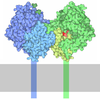

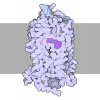
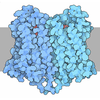



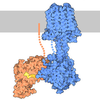
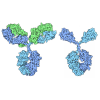


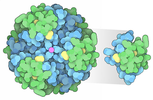


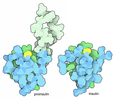
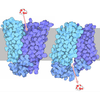
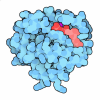

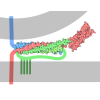
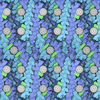
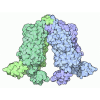
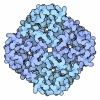
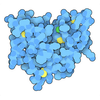


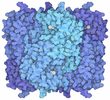
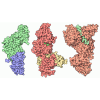
 Z (Sec.)
Z (Sec.) Y (Row.)
Y (Row.) X (Col.)
X (Col.)












































